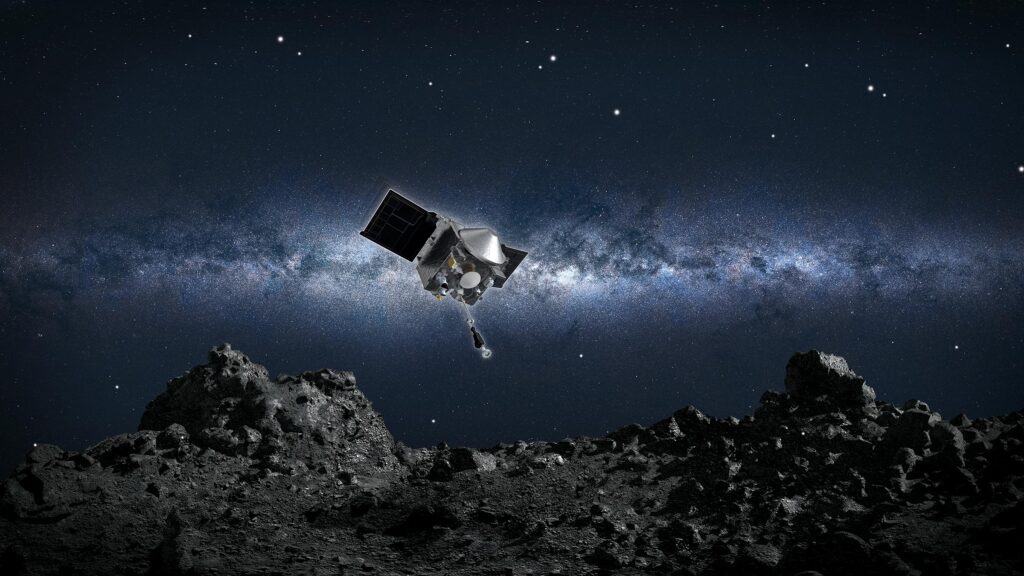
Scientists may have discovered a fifth fundamental force of the universe, and it could be closer to home than we think. New research suggests that instead of searching the depths of space, our best chance of uncovering this mysterious force might lie within asteroids in our Solar System.
According to a groundbreaking study published in Communications Physics, astronomers propose that closely observing asteroids like Bennu could provide critical insights into the existence of a new particle responsible for dark matter. Dark matter is the elusive, invisible substance believed to make up 85% of the universe’s mass.
NASA’s OSIRIS-REx mission, which has gathered extensive data on the near-Earth asteroid Bennu, offers a potential testing ground for these theories. The data, say researchers, could reveal anomalies that challenge the Standard Model of physics. These anomalies might even signal the existence of a fifth force, according to Yu-Dai Tsai, lead author of the study and researcher at Los Alamos National Laboratory in New Mexico.
This approach echoes the way astronomers predicted the existence of Neptune by observing irregularities in Uranus’ orbit. Any deviations in the movement of Bennu or other near-Earth asteroids could highlight significant gaps in our current understanding of physics.
Investigating Dark Matter with Asteroids
The Standard Model of physics explains three of the four known fundamental forces, but leaves out gravity, which is viewed as a warping of spacetime rather than a force. However, this isn’t the only mystery that defies the Standard Model. Dark matter—an invisible but critical component of the universe’s structure—remains largely unexplained.
Scientists have long hypothesized that dark matter might be composed of particles called ultralight bosons, which have incredibly small masses—less than one-billionth of an electron. Until now, researchers have attempted to study ultralight bosons by focusing on black holes. But the new study suggests that by analyzing data from Bennu, scientists can set tighter constraints on the existence of these particles and the potential fifth force.
Coauthor Sunny Vagnozzi, a physicist at the University of Trento, emphasized the significance of their findings, saying, “The constraints we’ve achieved are among the tightest limits ever on Yukawa-type fifth forces.”
What’s Next? Apophis and the Future of Research
To build on these findings, scientists plan to turn their attention to another near-Earth asteroid, Apophis, which will make a close pass by Earth in 2029. This next phase of research could bring us even closer to confirming whether a new fundamental force—and possibly new physics—awaits discovery within our Solar System.
By examining objects much closer to Earth, researchers may uncover the secrets of the universe that have eluded them in deep space. Could asteroids like Bennu and Apophis hold the key to understanding dark matter and revealing a fifth fundamental force? The answer might be closer than we think.















